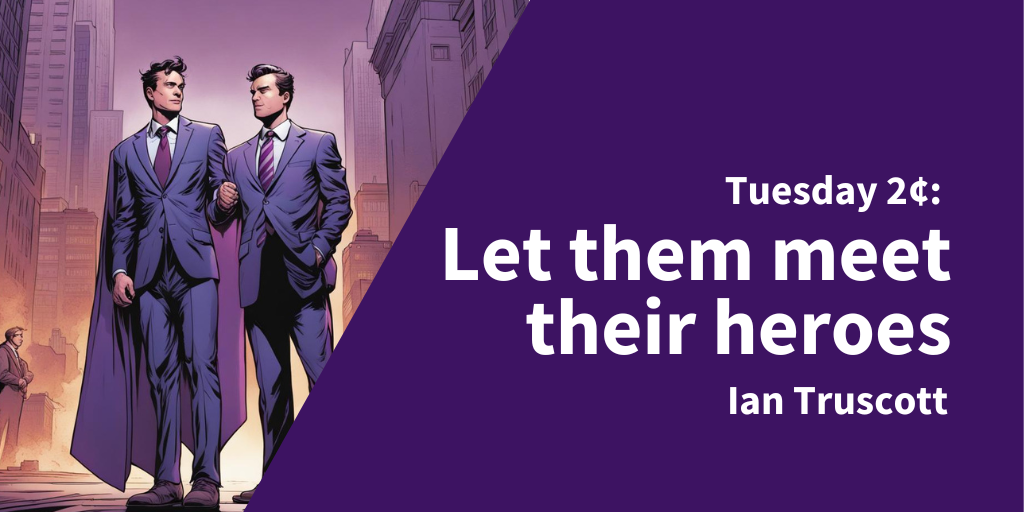In this week’s 2¢, case studies and letting the buyer meet their heroes.
This week, I’m pulling at a thread from the most recent Rockstar CMO podcast episode, during which Jeff Clark and I chatted about case studies. We shared three tips each in a feature we called “One-Hit-Wonder, Stevie Wonder and Wonderwall”.
My “Stevie Wonder”, or a tip that stands the test of time, is to ensure that when you are writing a case study or customer success story, the customer is the hero, not your company, service or product.
So often, case studies are written from the vendor’s perspective: the client had a problem, and the vendor’s product or service rode in, and all the villagers were saved.
Is there anything wrong with this? We’ve always done it, and if we sell products and services that save villagers – people should know that, right?
The reason is that unless we have a VERY cool brand in our category, the buyer may not aspire to be known as a user of our software or service. This is not in the story they are telling themselves.
The story they are telling themselves is about how they solve their problem (or how they save the village). They aspire to be the person who can do that.
They aspire to be the executive featured in the case study, the person like them who successfully solved this problem, saved the cash, improved the CX, increased the sales, reduced the fraud, or, whatever it is, our product or solution was a tool for.
And the story pulls at their FOMO and their FOFU.
Appealing to their Fear Of Missing Out (FOMO) on being that person while calming down their Fear of F’in’ Up (FOFU), by showing them that not only will they not F’ up, but that there is a peer who was so successful choosing the product or service they are proud and put their name on our vendor collateral.
They can see the career enhancement, not just in terms of solving the problem and getting their ‘job-to-be-done’ done, but they also see the hero of our case study being elevated by being quoted in industry content, maybe they are talking at our events and are generally fettered as a person that knows their shit.
Of course, in all of this, our brand gets wrapped up in all this hero coolness; after all, our product or service was key to saving the village. And then, we may become that VERY cool brand that the next buyer will aspire to be a user of.
Until then, the hero of our case study should be their hero, the person they aspire to be.
Let them meet them.
Aside from my ongoing argument about my casual writing style and curse words with Grammarly, robots did not write any of this copy, but they did create the image, which was created with NightCafe Studio.
Fancy more of this?
Subscribe to my Rockstar CMO Newsletter

I’m a 3xCMO, now a marketing strategy advisor and podcast host at Rockstar CMO. Although, I’m not a rock star, but a marketing leader, strategist, content marketer, columnist, speaker, industry watcher, and creator of ART (Awareness, Revenue, and Trust) for the companies I work with. But most of all, I am an enthusiastic tea drinker.
You can find me on LinkedIn, Twitter, or now Threads! – or listen to my weekly podcast at Rockstarcmo.com
The half-baked thoughts shared on this blog may not reflect those of my employer or clients, and if the topic of this article is interesting or you just want to say hello please get in touch.
